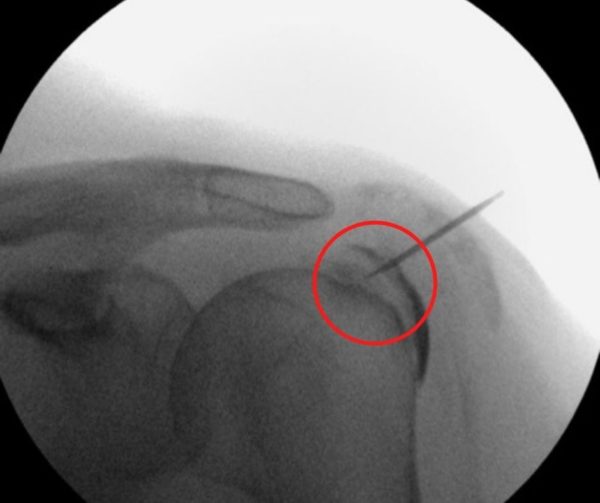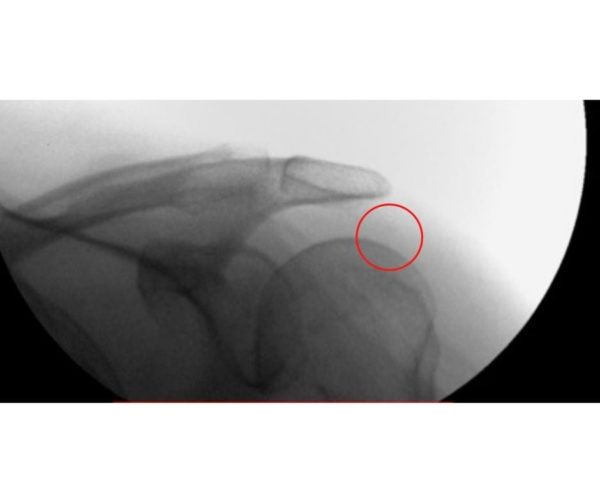What is Calcific Shoulder Tendonitis?
The rotator cuff of the shoulder consists of four muscles that wrap around the ball part of the shoulder joint. These muscles help to move the arm and also keep the ball well seated in the socket. As they move, the rotator cuff tendons can get impinged, stretched and scraped. This can lead to irritation, swelling (shoulder tendonitis) or even tears in the tissue.
The tendons are “white tissues” that have a limited blood supply. Because of this, tissue damage, such as tears, oftentimes have a limited capacity for self-healing. Sometimes the healing process can go awry where the body deposits calcium into the damaged tissue. Over time, this can lead to a large build-up calcium which exacerbates pain and further limits range-of-motion because of mechanical impingement. The condition is then called calcific shoulder tendonitis. This is a painful condition that can significantly impact functional activities, sleep and overall quality of life.
Treatment Options for Calcific Shoulder Tendonitis
Once the tendon is calcified, it becomes much more difficult to treat with conservative methods, like physical therapy. Many patients are referred to surgeons who can perform an arthroscopic debridement to get rid of the calcium deposit and repair the tendon. This is a successful treatment, but leads to a long and painful recovery starting with a sling followed by extended physical therapy.
Another treatment option is needle debridement. With this technique, the practitioner uses a needle to break up the calcification and then aspirates the calcium away from the joint. This is a very effective technique to break up the calcium deposit with less pain and recovery compared to surgery. The downside is that any tissue damage, such as tendon tears, would likely not heal on their own afterwards. On top of that, while the body is attempting a repair, the area is again susceptible to more calcification.
To mitigate this risk, we can treat the tendons with platelet-rich plasma (PRP) directly after needle debridement. We have found this treatment strategy effective in getting rid of the calcification along with promoting tissue repair in the damaged structure. I will next describe a case that demonstrates the effectiveness of this strategy.
CHARM Patient Case: Bilateral Calcific Shoulder Tendonitis
A 56 year old female was seen in our office with pain over both shoulders. She had pain with overhead activities, donning her clothes and at while trying to sleep. Symptoms persisted despite a course of physical therapy. We did X-rays and she was found to have significant calcifications in one of the rotator cuff tendons in both shoulders. After discussing all of her treatment options, she opted to pursue needle debridement with PRP.
The first picture shows the large calcification in the left shoulder:

The next picture demonstrates needle placement within the calcification. This is all done under image guidance using live X-rays and ultrasound.

The broken down calcium was removed from the area by aspiration:
We saw the patient back for follow-up evaluation a few months later and repeat X-rays showed resolution of the calcification. The patient felt much better and had significantly improved function and quality of life since the procedure.

During the initial treatment, we also addressed the right shoulder calcific tendinitis. Shown here is a picture demonstrating our needle entering the calcification of the right shoulder under X-ray guidance:

Again, on follow-up exam, the calcification was gone and she felt much better.

This case demonstrates the efficacy of treating painful calcific tendinitis without surgery. We can successfully break up the calcium deposit with a needle then induce tissue repair of the tendon damage with PRP. As always, results may vary from patient to patient, but we have seen many similar successful outcomes with very little downside.

Board-Certified Physical Medicine & Rehabilitation by ABPMR and AOBPMR
Fellowship-Trained and Board-Certified in Pain and Musculoskeletal Medicine




